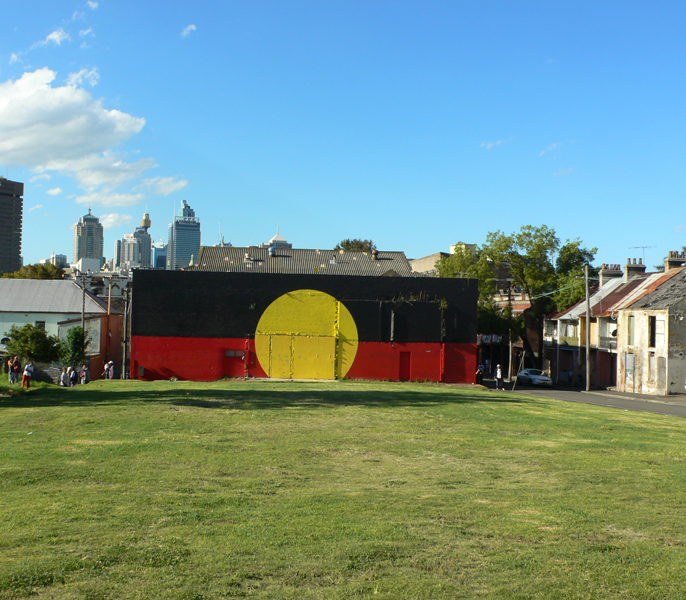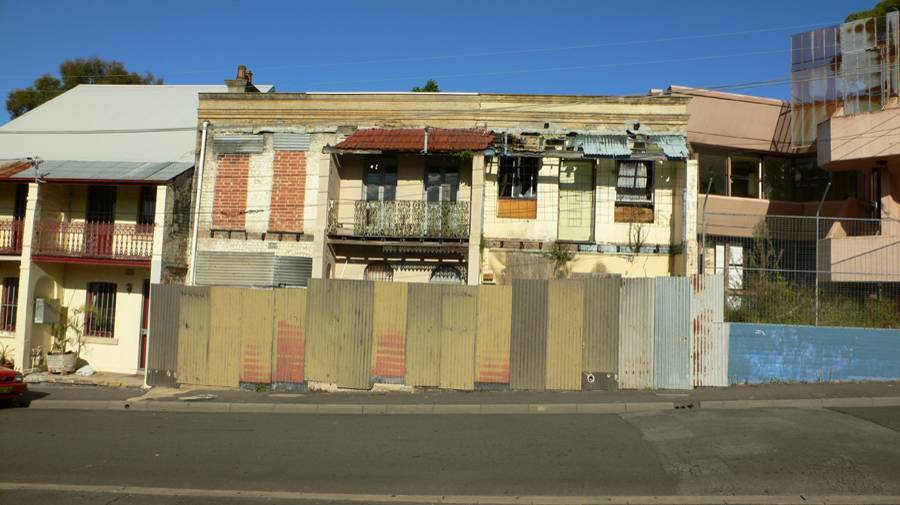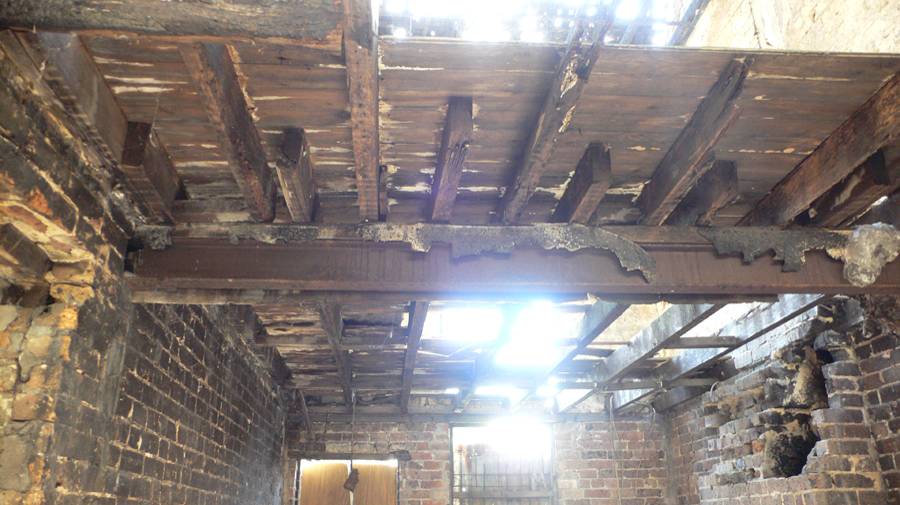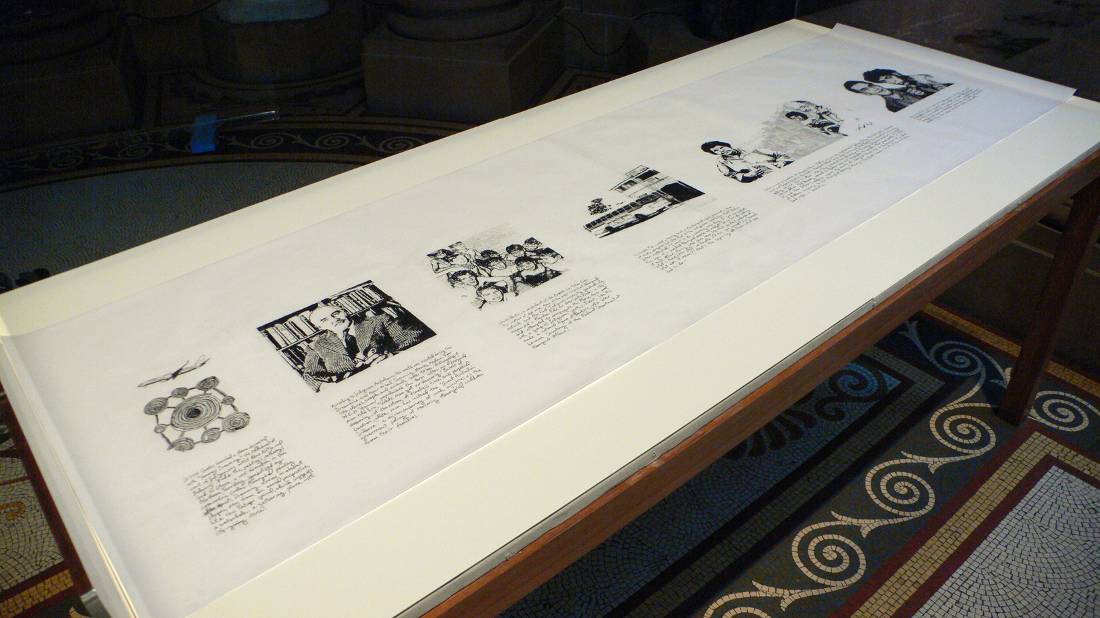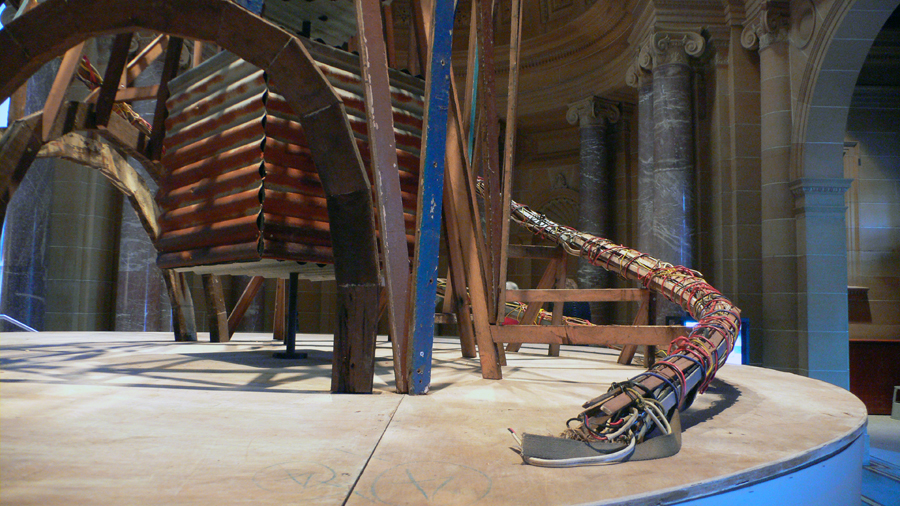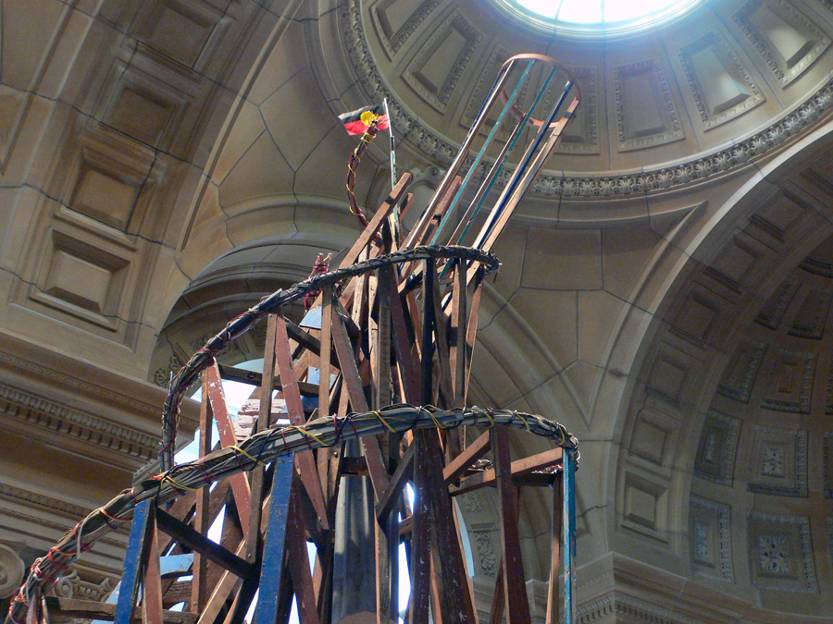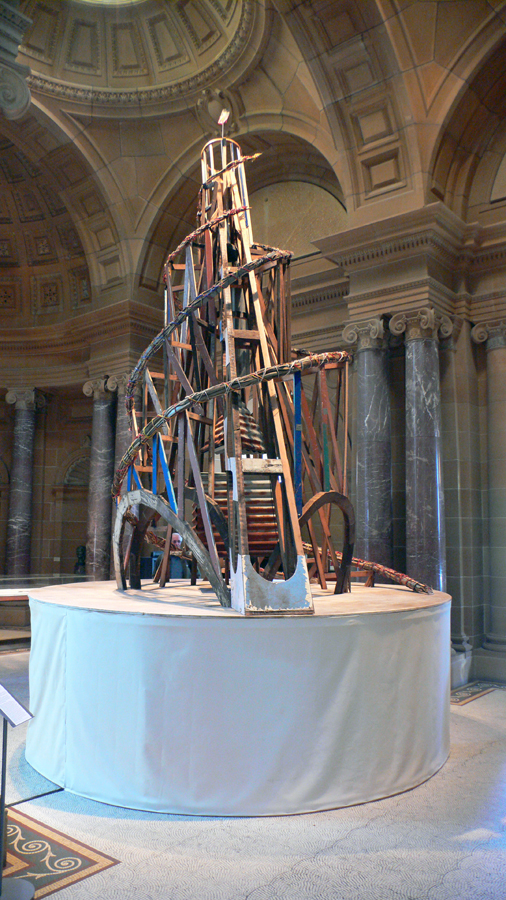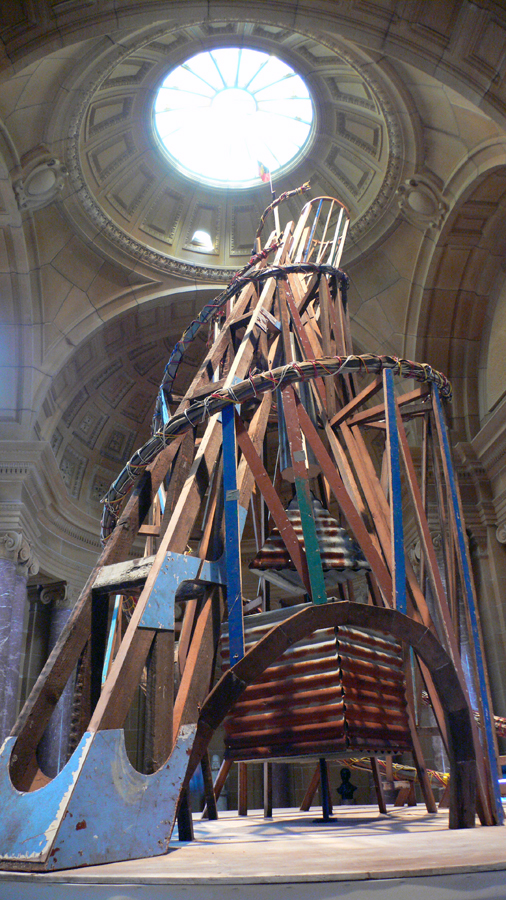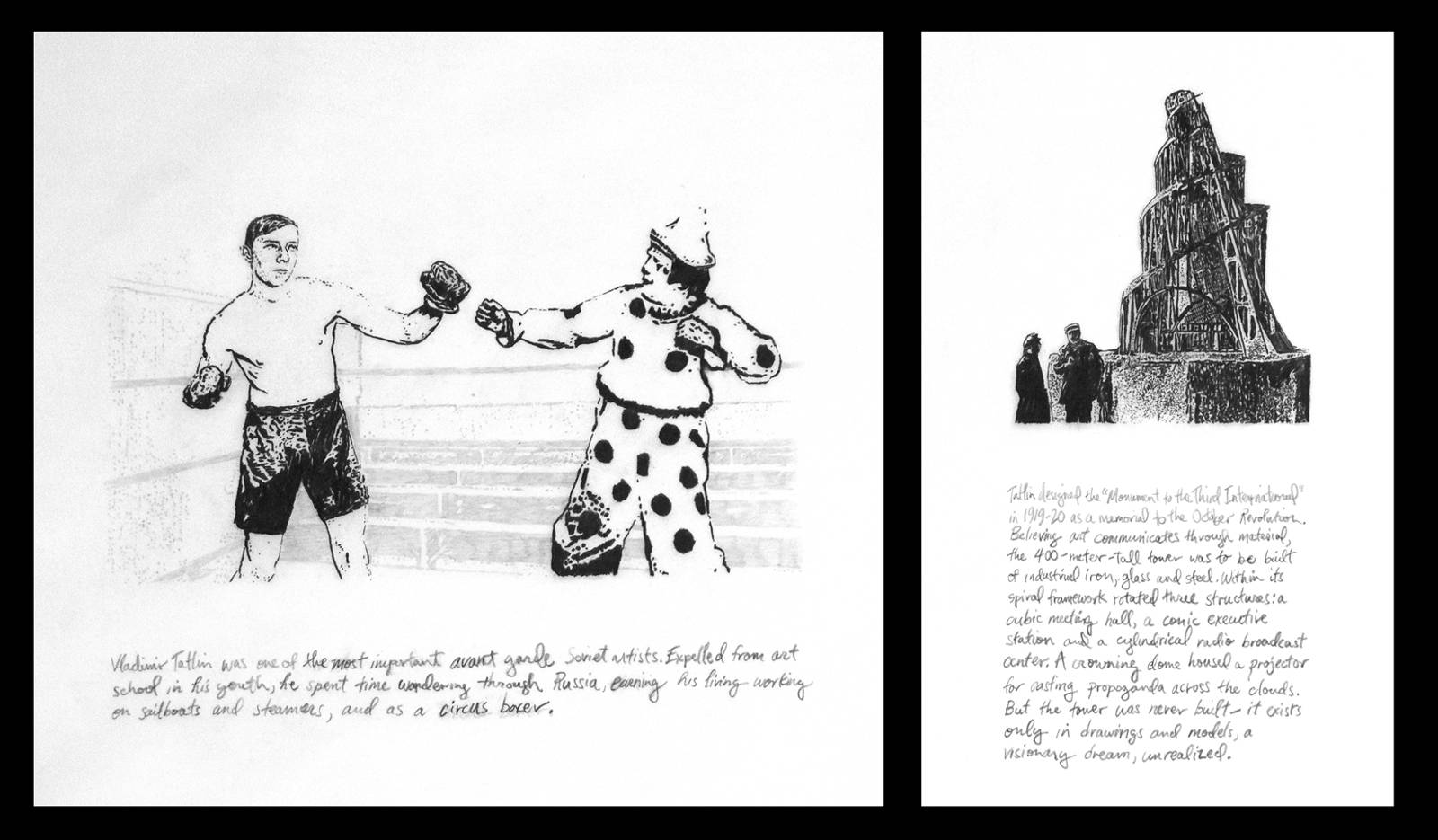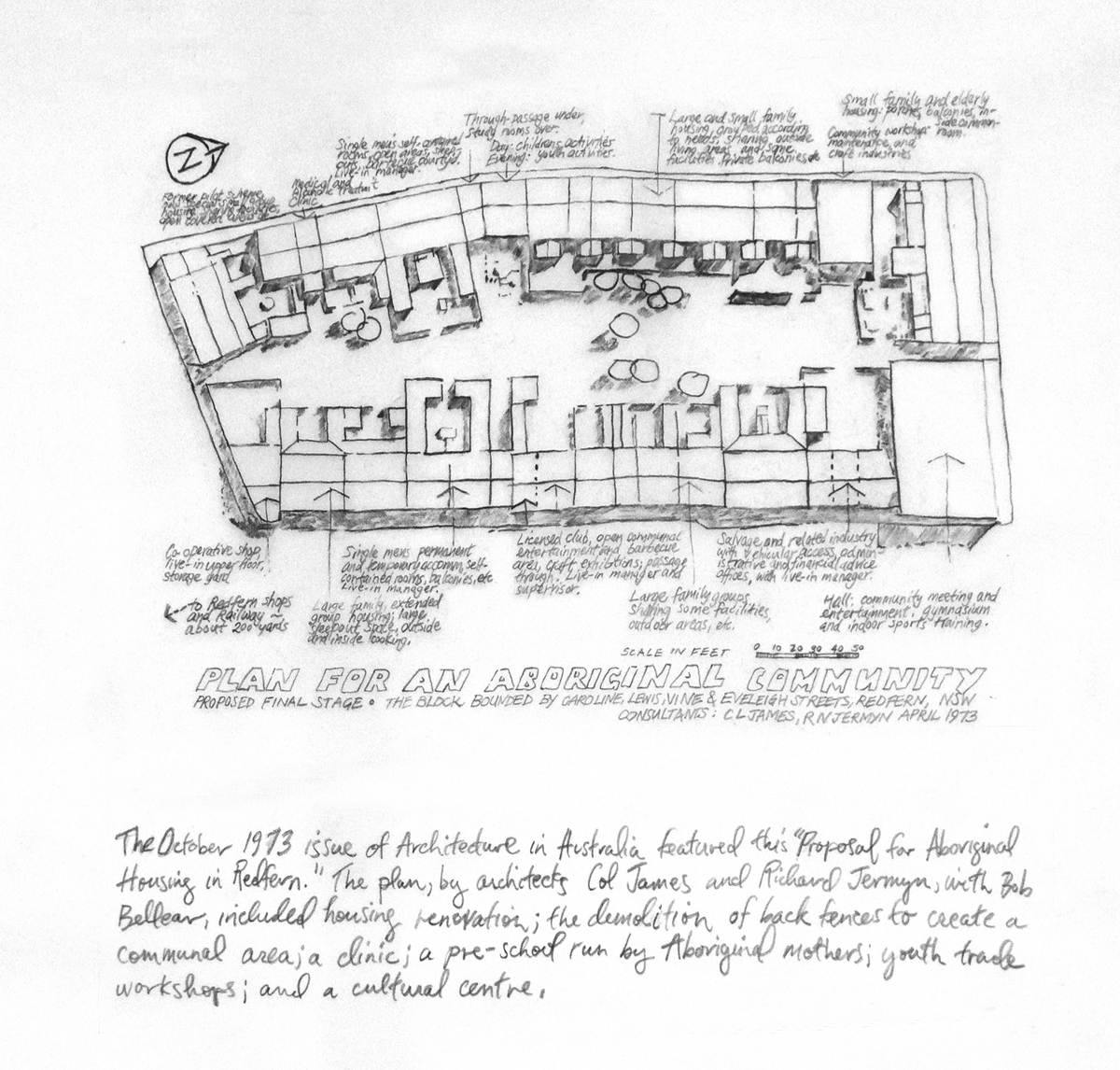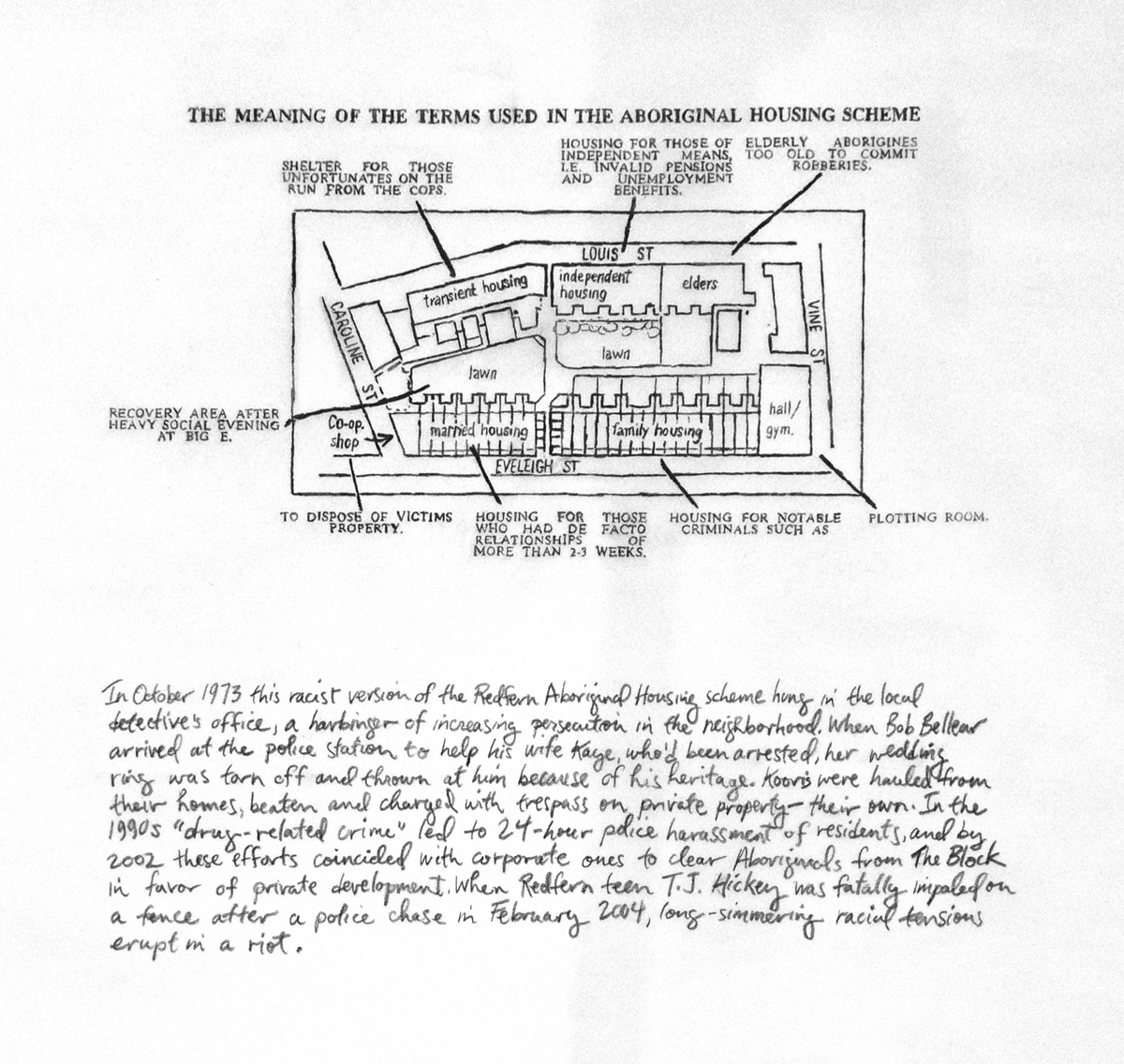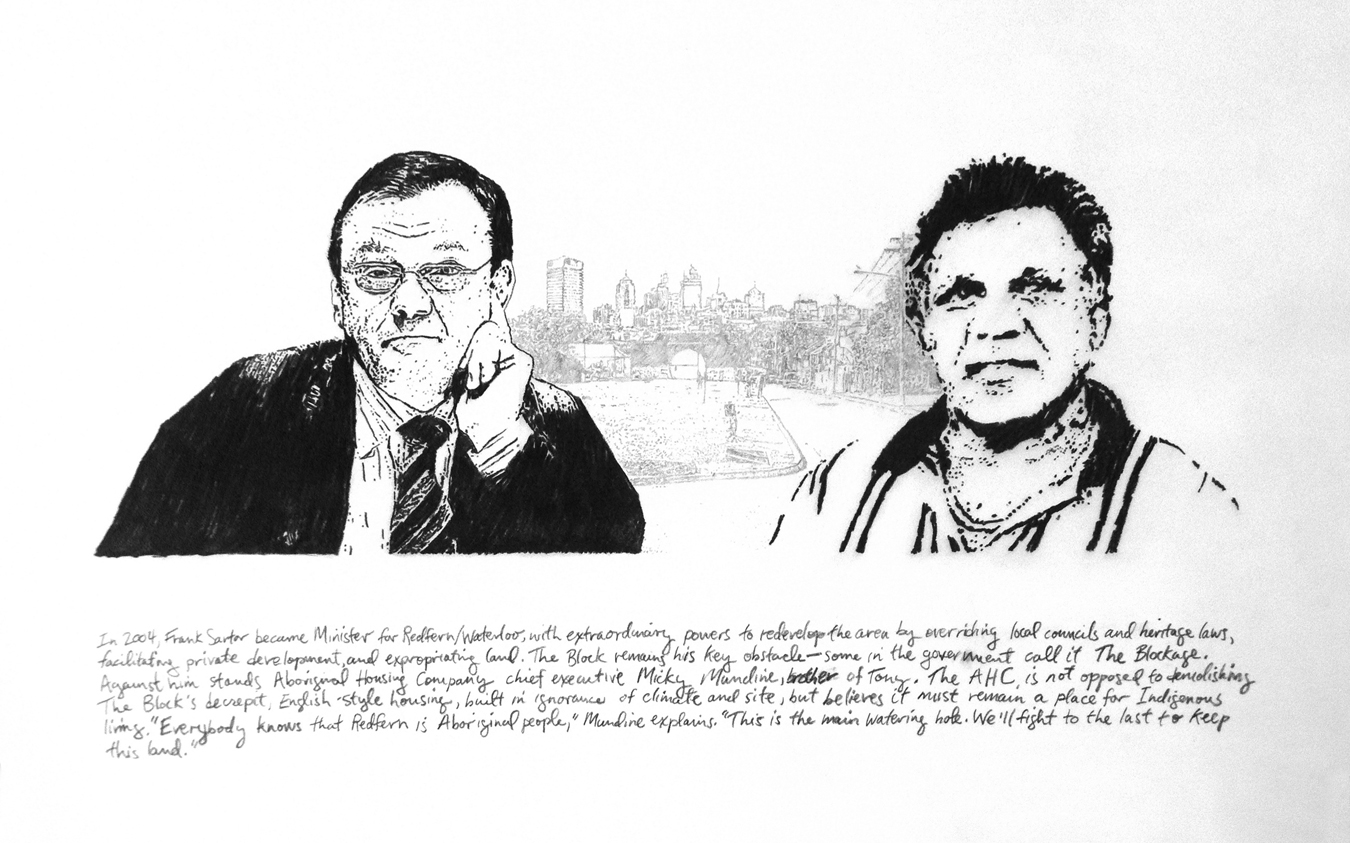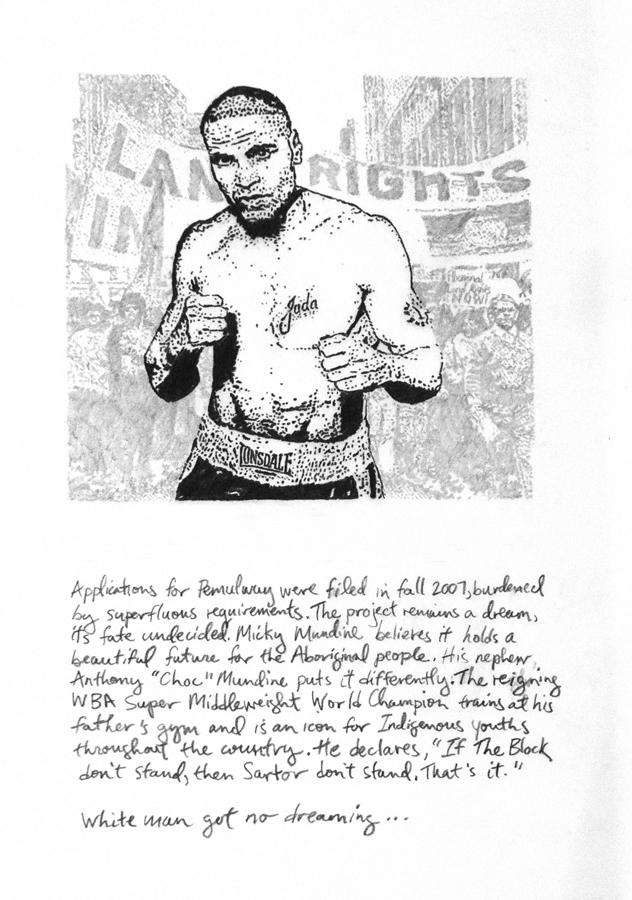White man got no dreaming
2008
Mixed media installation at the Art Gallery of New South Wales, Sydney, Australia
Commissioned for the 16th Biennale of Sydney, Revolutions—Forms that turn
White man got no dreaming responds to contemporary Indigenous life in Australia and creates new associations with the history of visionary architecture and its failures, and with the collapse of narratives of revolution. Produced in collaboration with a number of individuals and groups in the contested Aboriginal neighborhood of Sydney referred to as The Block, the project includes a narrative series of drawings and a full-scale contemporary version of avant-garde Russian artist Vladimir Tatlin's model for Monument to the Third International (1919). The reconstructed tower, which was to have been made of a double-helix of spirals, was never built; today, it is a symbol of revolutionary and visionary thought. The Block’s Tatlin tower is a rebirth of collective hope, as it recycles discarded materials from old houses, soon to be demolished, owned by the Aboriginal Housing Company in Redfern, Sydney, and fulfills one of Tatlin's intentions for the original Monument by using it as a broadcast tower for Koori Radio, a local Aboriginal station.
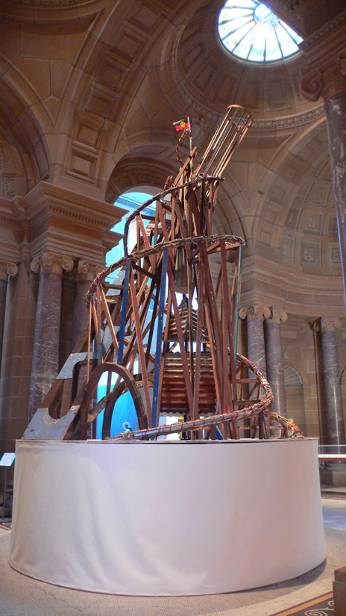
Exterior and interior of dilapidated houses on The Block where materials such as timbers, wire and corrugated steel were salvaged to construct the tower.
The tower connects the intention of visionary architecture to dream with the Aboriginal belief that the world was created during the Dreamtime. Their tribal Dreaming stories explain how life, places, people and animals came to be. The term was popularized by anthropologist W.E.H Stanner after an Aboriginal man told him, “White man got no dreaming.” Bereft of dreaming, of the notion of timeless time and perpetual creation, white man has instead the “Great Australian Silence,” a disremembering of such injustices as the government policy of removing Aboriginal children from their families.
The characteristic spiral of Tatlin’s Monument was translated by many in the community to be connected to the traditional use of the spiral in Aborginal Western Desert painting, often connoting a waterhole, or gathering ground—precisely what The Block has become for Indigenous people throughout the country. Figures like Mum Shirl and Father Ted Kennedy were central in establishing ministries and services for the community, and wharfies like Chicka Dixon and former boxer Teddy Rainbow were amongst the first activists who organized to establish the Aboriginal Housing Company.
